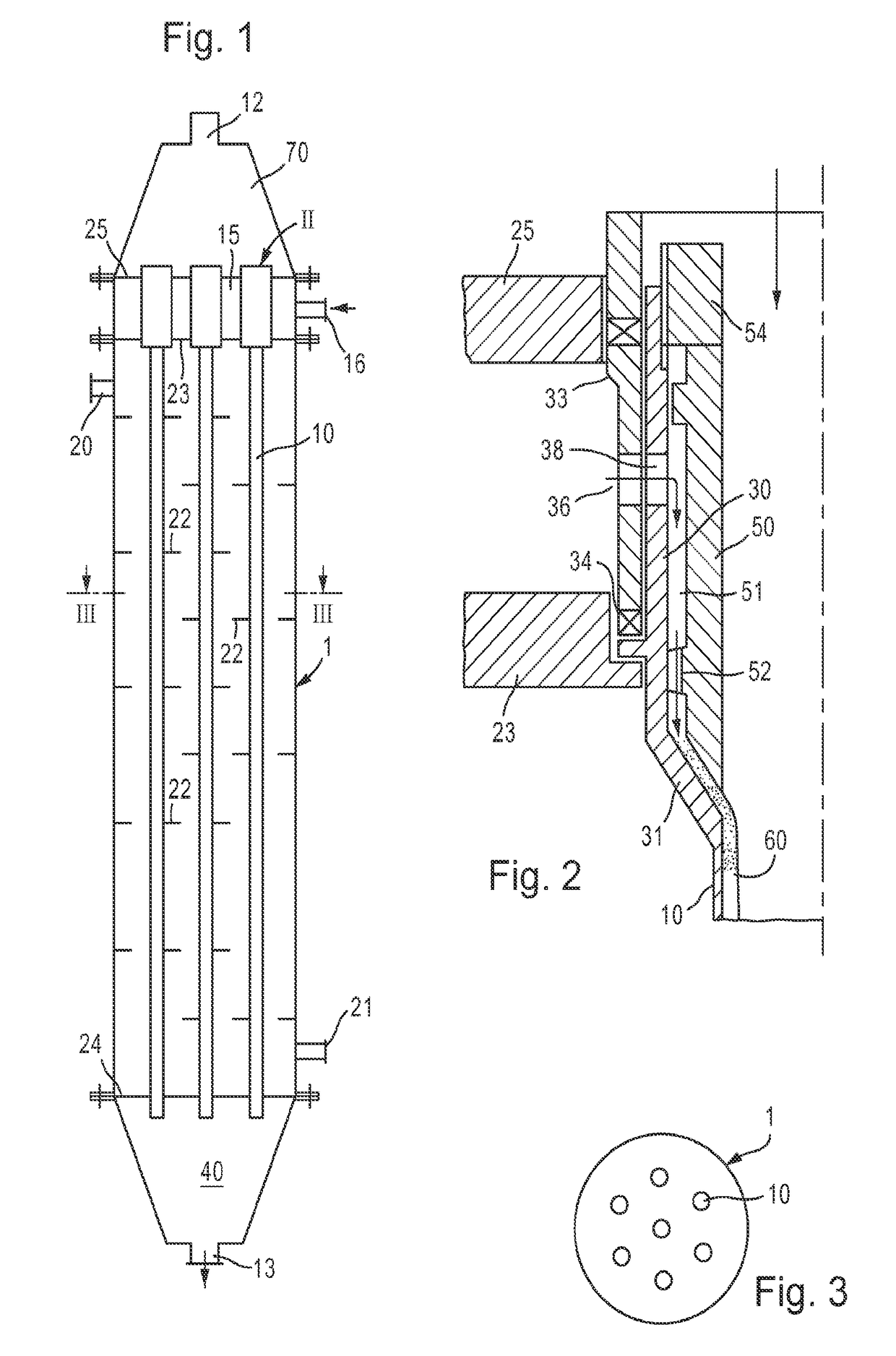Film ozonolysis in a tubular or multitubular reactor
a technology of film ozonolysis and tubular or multi-tubular reactor, which is applied in the direction of carbonyl compound preparation, liquid-gas reaction of thin-film type, water/sewage treatment by oxidation, etc., can solve the problems of significant explosion risk, peroxide intermediate, and technology that has not been adapted for large-scale (multi-ton) manufacturing processes, etc., to facilitate gaseous reagent diffusion, reduce mechanical energy, and simplify reaction setup
- Summary
- Abstract
- Description
- Claims
- Application Information
AI Technical Summary
Benefits of technology
Problems solved by technology
Method used
Image
Examples
example 1
Film Ozonolysis in a Monotubular Reactor
Ozonolysis Reactor Details
[0115]A pilot tube reactor was used for ozonolysis, including a tube with a 10 mm internal diameter and a length of 1.7 m (e.g., 10 in FIG. 1). The tube was constructed of 316 stainless steel and was connected to a gaseous reagent feeding chamber (e.g., 70 in FIG. 1) that allowed gas to be flowed through the center of the tube and liquid to be flowed in a film on the wall of the tube through annular slots (e.g., as shown in FIG. 2; component II in FIG. 1). The tube was enclosed in a steel jacket (e.g., 1 in FIG. 1) for circulating cooling fluid around the reaction tube (e.g., 10 in FIG. 1) with the end of the tube protruding through a liquid-sealed orifice (e.g., 24 in FIG. 1). A liquid / gas separation vessel was connected to the bottom of the reaction tube (e.g., 10 in FIG. 1). The excess gas flowed through to an ice condenser followed by an ozone destruction unit. The collected liquid product was pumped through a per...
example 2
Ozonolysis Reactor 2 Details
[0125]A second arrangement of involving 3 pilot tube reactors connected in series was used. All 3 tubes were 1.7 m in length, with the first 2 tubes being 25 mm in diameter and the 3rd tube being 10 mm in diameter. All tubes were equipped with a film distribution head, a cooling jacket, and a gas liquid separator at the bottom. The organic, liquid feed was flowed from the first tube through the second and third tube in series. The gas was flowed co-currently from the 3rd tube through the 2nd to the 1st tube. The cooling jacket temperature was maintained at 15° C.
[0126]In one instance, this reactor was used to process a 75% mixture of vegetable fatty acid in nonanoic acid. The major components of the vegetable fatty acid were estimated as follows: 77.65% oleic acid, 11.64% linoleic acid, 1.98% stearic acid, 4.4% palmitic acid, 2.9% myristic acid. The O3 was generated using pure O2 and a generator composed of 2 Pinnacle Quadblocks in a custom cabinet. The r...
PUM
| Property | Measurement | Unit |
|---|---|---|
| gas flow rate | aaaaa | aaaaa |
| diameter | aaaaa | aaaaa |
| diameter | aaaaa | aaaaa |
Abstract
Description
Claims
Application Information
 Login to View More
Login to View More - R&D
- Intellectual Property
- Life Sciences
- Materials
- Tech Scout
- Unparalleled Data Quality
- Higher Quality Content
- 60% Fewer Hallucinations
Browse by: Latest US Patents, China's latest patents, Technical Efficacy Thesaurus, Application Domain, Technology Topic, Popular Technical Reports.
© 2025 PatSnap. All rights reserved.Legal|Privacy policy|Modern Slavery Act Transparency Statement|Sitemap|About US| Contact US: help@patsnap.com

